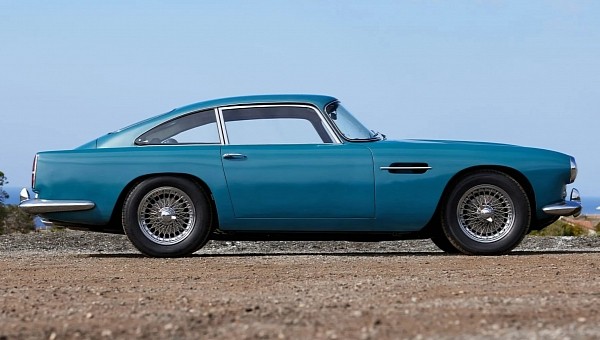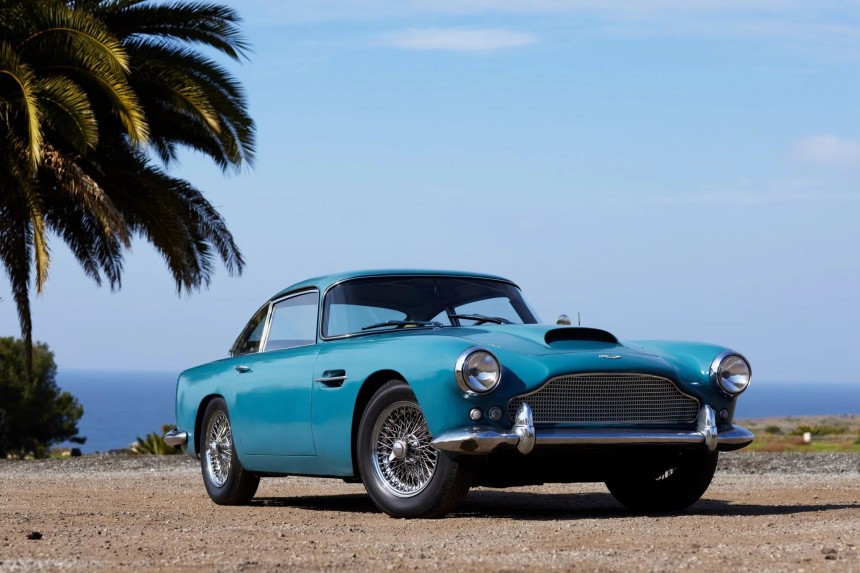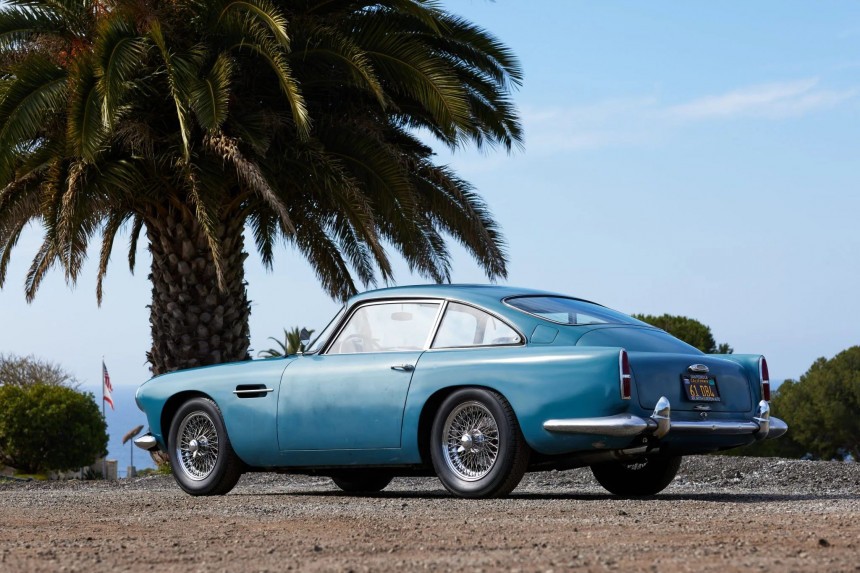Prior to Aston Martin Lagonda moving its headquarters and production facility to Gaydon, the British automaker’s home was Newport Pagnell. Over 13,300 vehicles have been hand-built there since the 1950s, ranging from the DB4 that paved the way for the magnificent DB5 to the V12 Vanquish featured in Die Another Day. The V12-engined grand tourer also served as the basis for the VH platform of the DB9, a bonded aluminum chassis that would be replaced by the Second Century platform of the DB11 in 2016.
Newport Pagnell currently plays a vital role as the headquarters of Aston Martin Heritage, as well as the oldest Aston Martin dealership in the world. Specialized in every single model produced by the British marque since it produced cars in Feltham, this facility is also responsible for producing continuation models such as the DB4 GT Continuation we’ve previously covered on autoevolution. 75 originals, plus the one-off DB4 GT Bertone Jet design study, were finished between 1959 and 1963. The DB4 GT Continuation series, on the other hand, numbers 25 units.
Aston Martin revealed the DB4 in October 1958 at the Paris Motor Show as the replacement for the DB Mark III, which used an evolution of the Lagonda straight-six engine developed by Willie Watson and Walter Owen Bentley. Arguably the biggest difference between these models can be found under the bodyshell, namely a monocoque for the DB4 rather than a tubular chassis for the DB Mark III. Both of them feature live rear axles.
Gifted with a shorter wheelbase (2,489 millimeters compared to 2,515 millimeters), the newcomer also happens to be the first Aston Martin equipped with disc brakes at every corner. The British automaker first used Dunlop-supplied brakes that measure 292 millimeters all around, then switched to Girling units. The system’s servo unit came from Lockheed.
The chassis incorporates double-wishbone independent suspension up front, complemented by an anti-roll bar and coil springs backed up by Armstrong shock absorbers. Parallel trailing links are used out back, along with a Watt’s linkage and coil springs. Featuring the same 1,372-millimeter front and rear tracks as the car it replaced, the DB4 was originally fitted with 16-inch wire wheels mounted with crossply Avons or radial Pirellis.
Another evolutionary step up from the DB Mark III can be found under the hood, namely a dual-overhead-camshaft I6 with an all-alloy construction that made it lighter than its iron-block predecessor. The straight-six Lagonda engine was redesigned by Tadeusz "Tadek" Marek, the Polish engineer who developed the British automaker’s long-running V8 engine that would be replaced by the AJ37 in the 2005 Aston Martin V8, a free-breathing lump that was loosely based on the AJ-V8 developed by Jaguar.
Stroke remained put at 90 millimeters, with bore increasing from 83 to 90 for a displacement of 3,670 compared to 2,922 cubic centimeters. The 8.2:1 compression ratio of the DB Mark III was improved to 8.25:1 for the DB4, and in combination with a couple of SU HD8 carburetors, the larger engine was – understandably – more powerful. Aston Martin advertised 240 mechanical horsepower (243 metric horsepower) at 5,500 revolutions per minute and 239 pound-foot (325 Nm) of torque at 4,250 revolutions per minute, resources channeled to the Salisbury rear axle by a manual tranny.
A torque-converter automatic was offered as well, sporting three rather than four gears. Tipping the scales at 1,308 kilograms (make that 2,884 pounds), the DB4 was much obliged to reach 225 kilometers per hour (140 miles per hour) on full song. The DB4 came standard with a 3.54:1 final drive ratio.
Aston Martin improved the breed for the Series 3, which entered production in April 1961. The options list included the DB4 GT-spec powerplant with a twin-plug head, two distributors, high-lift cams, and three 45 DCOE carburetors from Weber. All told, the high-output engine cranked out 302 horsepower (306 ps) at 6,000 rpm and 270 lb-ft (366 Nm) at 5,000 rpm.
The Vantage option also features the DB4 GT-spec powerplant, which is constructed from a lighter alloy developed for aircraft use by Rolls-Royce. The alloy in question is dubbed R.R.50, a general purpose casting alloy that includes copper, nickel, magnesium, iron, titanium, and silicon in varying proportions, ranging from 0.05-percent titanium up to 2.80-percent silicon.
As the Superleggera badging on the hood implies, the DB4 features Italian bodywork. It was Aston Martin in Newport Pagnell rather than Touring in Milan who produced the panels of the DB4. Being a monocoque, the DB4 used the Superleggera construction technique for only a handful of panels.
A 2+2 grand tourer with front seats that fold down for access in the rear, the DB4 received its final updates in September 1962 with the Series 5. It came with 15-inch wheels due to being taller and slightly longer than all preceding series. It also came with an airbox for the carburetors, larger front turn signals, a larger rear number plate light, and redesigned rear lights.
Replaced by the bite-the-back-of-your-hand pretty DB5 made famous by 007 in Goldfinger, the DB4 ended production in 1963. Including 70 dropheads, the DB4 was put to pasture after 1,110 cars were produced in Newport Pagnell.
Aston Martin revealed the DB4 in October 1958 at the Paris Motor Show as the replacement for the DB Mark III, which used an evolution of the Lagonda straight-six engine developed by Willie Watson and Walter Owen Bentley. Arguably the biggest difference between these models can be found under the bodyshell, namely a monocoque for the DB4 rather than a tubular chassis for the DB Mark III. Both of them feature live rear axles.
Gifted with a shorter wheelbase (2,489 millimeters compared to 2,515 millimeters), the newcomer also happens to be the first Aston Martin equipped with disc brakes at every corner. The British automaker first used Dunlop-supplied brakes that measure 292 millimeters all around, then switched to Girling units. The system’s servo unit came from Lockheed.
The chassis incorporates double-wishbone independent suspension up front, complemented by an anti-roll bar and coil springs backed up by Armstrong shock absorbers. Parallel trailing links are used out back, along with a Watt’s linkage and coil springs. Featuring the same 1,372-millimeter front and rear tracks as the car it replaced, the DB4 was originally fitted with 16-inch wire wheels mounted with crossply Avons or radial Pirellis.
Stroke remained put at 90 millimeters, with bore increasing from 83 to 90 for a displacement of 3,670 compared to 2,922 cubic centimeters. The 8.2:1 compression ratio of the DB Mark III was improved to 8.25:1 for the DB4, and in combination with a couple of SU HD8 carburetors, the larger engine was – understandably – more powerful. Aston Martin advertised 240 mechanical horsepower (243 metric horsepower) at 5,500 revolutions per minute and 239 pound-foot (325 Nm) of torque at 4,250 revolutions per minute, resources channeled to the Salisbury rear axle by a manual tranny.
A torque-converter automatic was offered as well, sporting three rather than four gears. Tipping the scales at 1,308 kilograms (make that 2,884 pounds), the DB4 was much obliged to reach 225 kilometers per hour (140 miles per hour) on full song. The DB4 came standard with a 3.54:1 final drive ratio.
Aston Martin improved the breed for the Series 3, which entered production in April 1961. The options list included the DB4 GT-spec powerplant with a twin-plug head, two distributors, high-lift cams, and three 45 DCOE carburetors from Weber. All told, the high-output engine cranked out 302 horsepower (306 ps) at 6,000 rpm and 270 lb-ft (366 Nm) at 5,000 rpm.
As the Superleggera badging on the hood implies, the DB4 features Italian bodywork. It was Aston Martin in Newport Pagnell rather than Touring in Milan who produced the panels of the DB4. Being a monocoque, the DB4 used the Superleggera construction technique for only a handful of panels.
A 2+2 grand tourer with front seats that fold down for access in the rear, the DB4 received its final updates in September 1962 with the Series 5. It came with 15-inch wheels due to being taller and slightly longer than all preceding series. It also came with an airbox for the carburetors, larger front turn signals, a larger rear number plate light, and redesigned rear lights.
Replaced by the bite-the-back-of-your-hand pretty DB5 made famous by 007 in Goldfinger, the DB4 ended production in 1963. Including 70 dropheads, the DB4 was put to pasture after 1,110 cars were produced in Newport Pagnell.

































































































